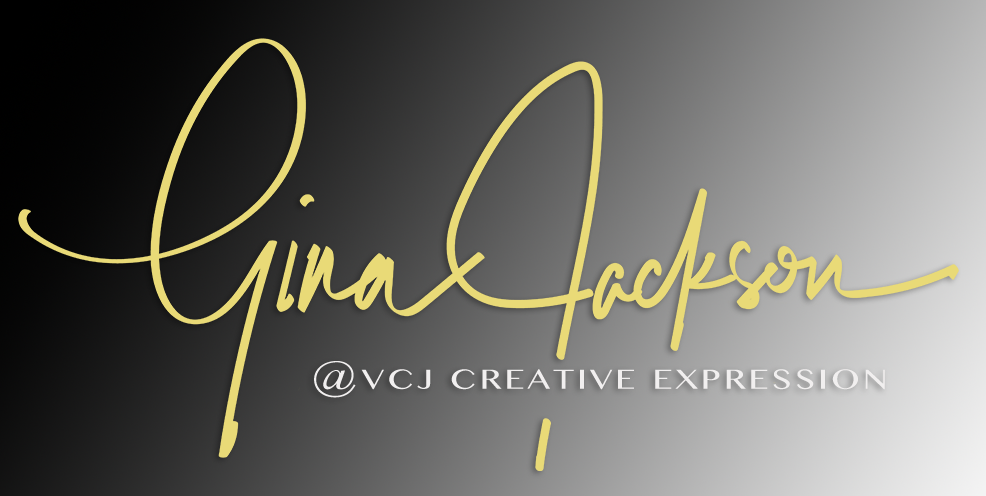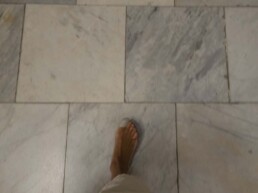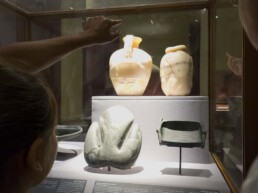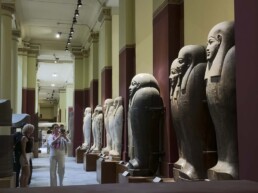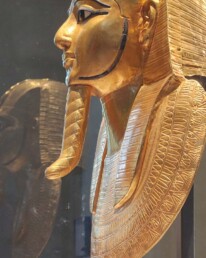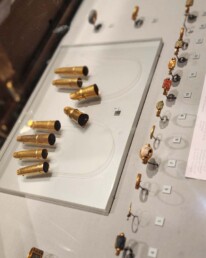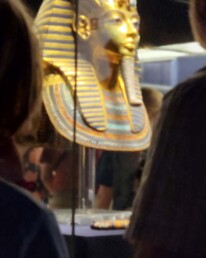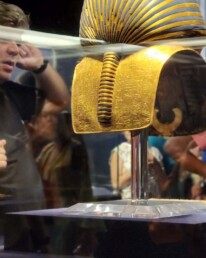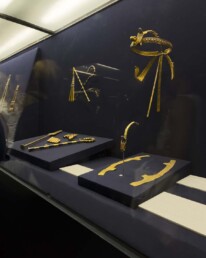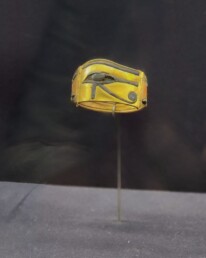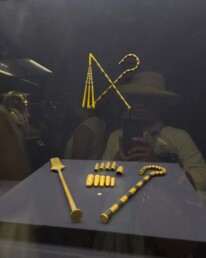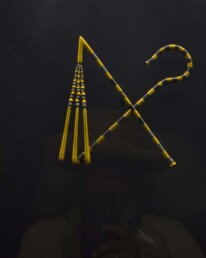The Egyptian Museum required a full day and maximum attention. The museum is the oldest archaeological museum in the Middle East, and houses the largest collection of Pharaonic antiquities in the world; displaying an extensive collection spanning from the Predynastic Period to the Greco-Roman Era.
The Egyptian Museum is located on the edge of Tahrir Square, Cairo’s most central and most famous public plaza and ginormous traffic circle. The site of the peoples’ uprising in 2011.
We spent approximately 90 minutes on the first floor alone, following our guide through the artifacts, sarcophagi, and ancient treasures of Egyptian culture. The image gallery to the right features a few of the pieces that caught my eye and attention.
The Sphinx of Pharaoh Hatshepsut, in particular, which sat broadly in the center ailse of the museum. The Egyptians believe that the sphinx was a representation of their solar deity, Sun God, Horus of the Horizon and symbolized royalty and sacred status.
Click Any Image | Open for More
The second floor housed the treasures found in the tomb of King Tut. A massive number of artifacts and treasures of King Tut’s tomb. British archaeologist Howard Carter and his patron Lord Carnarvon discovered a new and nearly undisturbed tomb in 1922 that turned out to be that of the boy pharaoh Tutankhamen, who ruled for about 10 years and died when he was only about 19 years old.
Because he died so young and his tomb had to be rushed, it was partly built underneath another tomb. As a result, archaeologists had largely overlooked the site of his tomb for decades and grave robbers overlooked it for thousands of years before that. When rediscovered in 1922, all of Tut’s treasures and possessions from over 3300 years ago were still intact inside of the sealed tomb. French archaeologists and the fledgling local Egyptian government began the process of instituting preservation laws and institutions, a lot of those treasures are now on public display throughout the world – on loan from the Egyptian Government and Museum.
In fact, only a portion of the tomb’s contents were here; exhibits and artifacts were already moved over to the new Grand Egyptian Museum out in Giza, some exhibits were rearranged and consolidated into smaller spaces within the current museum building.
